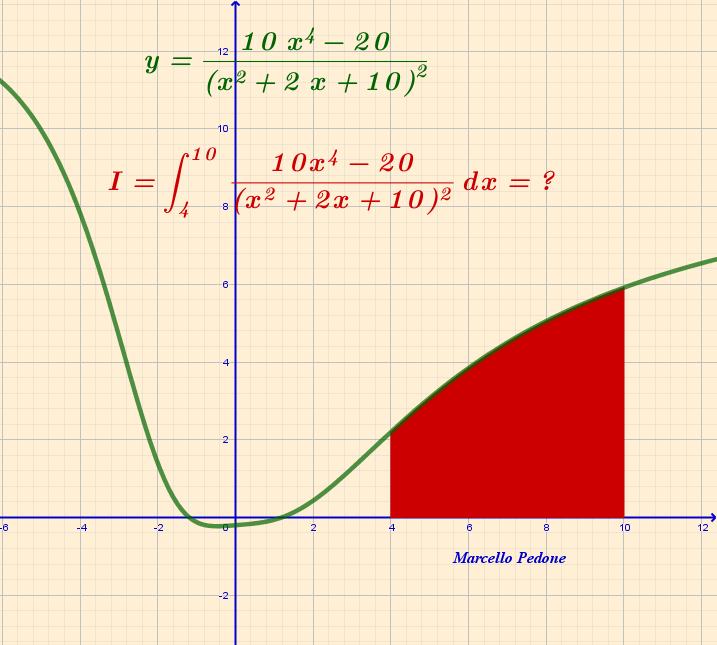This section requires Javascript.
You are seeing this because something didn't load right. We suggest you, (a) try
refreshing the page, (b) enabling javascript if it is disabled on your browser and,
finally, (c)
loading the
non-javascript version of this page
. We're sorry about the hassle.

By using Polynomial long division and Partial fraction decomposition you get
y r ( x ) b c d f = 1 0 ( x 2 + 2 x + 1 0 ) 2 x 4 − 2 = 1 0 q ( x ) p ( x ) = 1 0 ⎝ ⎜ ⎜ ⎜ ⎛ 1 − r ( x ) q ( x ) 4 x 3 + 2 4 x 2 + 4 0 x + 1 0 2 ⎠ ⎟ ⎟ ⎟ ⎞ = q b x + c + q d x + f = 4 = 1 6 = − 3 2 = − 5 8 .
And with the help of https://de.wikipedia.org/wiki/Partialbruchzerlegung /6.2 (I only found it in german) you can find a Antiderivative:
∫ y d x ∫ r d x = 1 0 ( x − ∫ r d x ) = 2 ln ( q ) + 2 7 9 5 arctan ( 3 x + 1 ) + 9 1 4 4 − 1 3 ( x + 1 ) ⋅ q 1
And so:
I ≈ 2 6 , 1 ⇒ 2 6 < I < 2 7